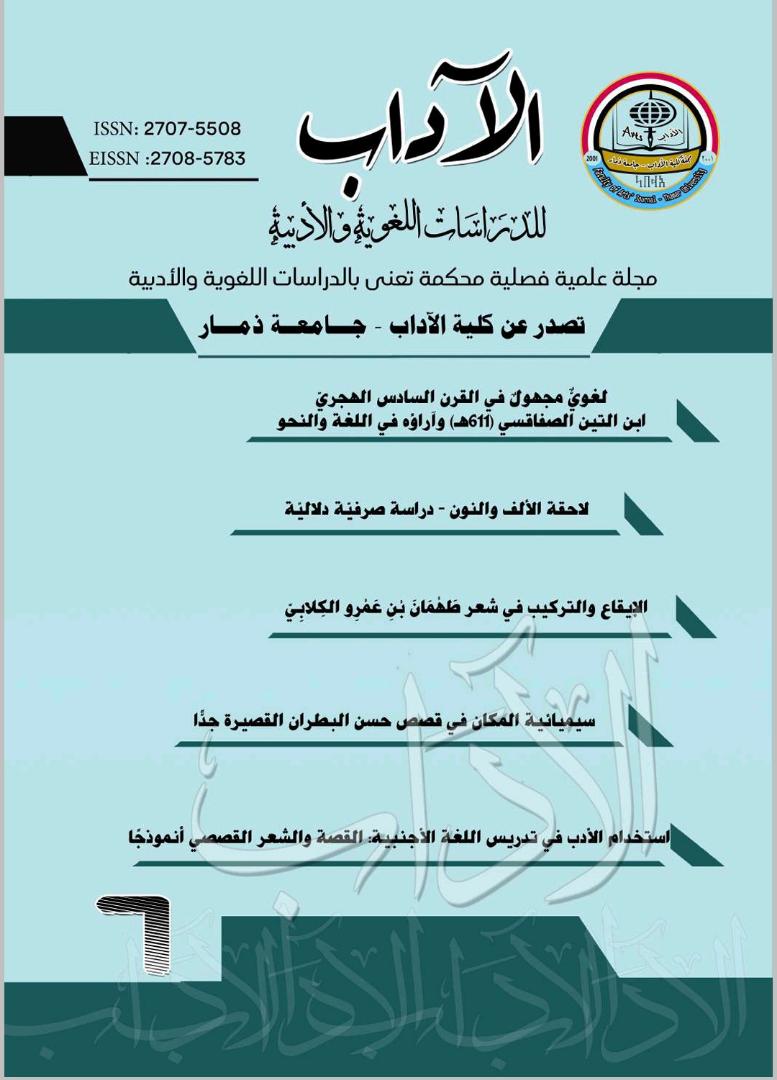The Self-Conflict in the Context of its Transformations in the Novel of Hathayan Al-Marafi
DOI:
https://doi.org/10.53286/arts.v1i7.279Keywords:
Conflict, Self, Transformations, Narrative, Hathayan Al-MarafiAbstract
The research problem lies in exploring the conflict in the Eastern self in the context of its transformations at the emotional, sexual, ritual and behavioral levels. The researcher explores the conflict in the Eastern self in the novel of Hathayan Al-Marafi with a view to uncover its levels. The paper intends to examine the following aspect determining the sources of conflict in the Eastern self, the changes of Eastern self-conflict within the context of its contact with the Western one in terms of culture, place and man. The study is focused particularly on the narrative experience of Hadhramout, by portraying the relationship between the self and the Western Other. The research follows the semantic and semiotic approach to explore the implications of this conflict. The analysis concludes that the collision between the Eastern cultural values and their Western counterparts is the main element within the self of the Eastern narrator. Besides, the Eastern self is incapable to accept the Western one, whatever closer the relationship between them is. The consciousness of vulnerability and imperfectness in front of the Western Other leads the Eastern self to withdraw and be entrenched in its Eastern heritage, as the Western openness to the Eastern one and the interest in coexistence with them is based their cultural system, which the Eastern rejects.Downloads
Downloads
Published
How to Cite
Issue
Section
License
Copyright (c) 2021 علي حسن العيدروس

This work is licensed under a Creative Commons Attribution 4.0 International License.
Copyright and Licensing
copyright is retained by the authors. Articles are licensed under an open access Creative Commons CC BY 4.0 license, meaning that anyone may download and read the paper for free. In addition, the article may be reused and quoted provided that the original published version is cited. These conditions allow for maximum use and exposure of the work.



